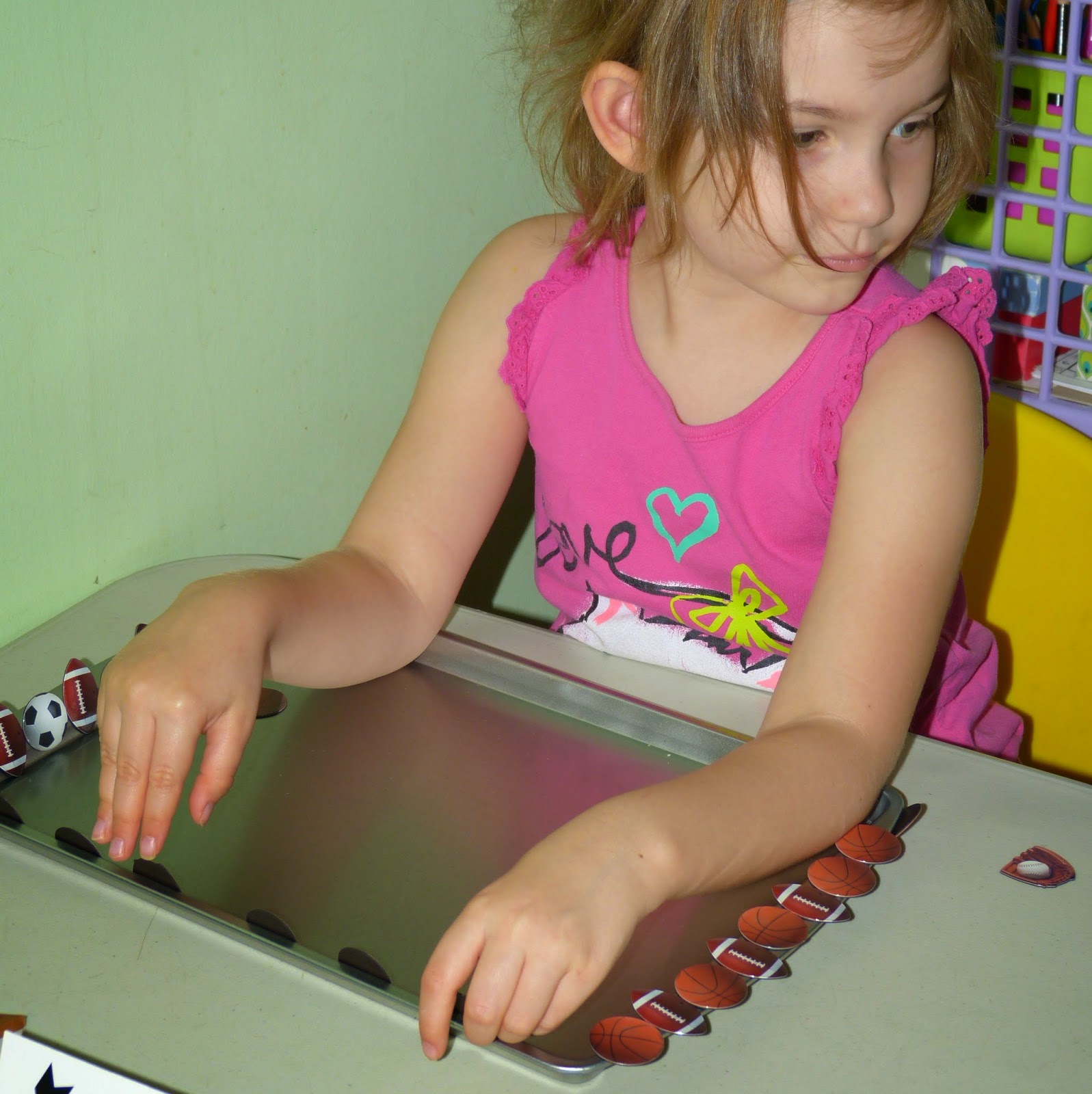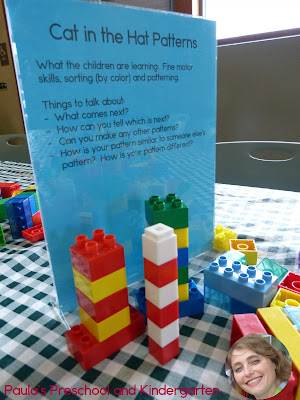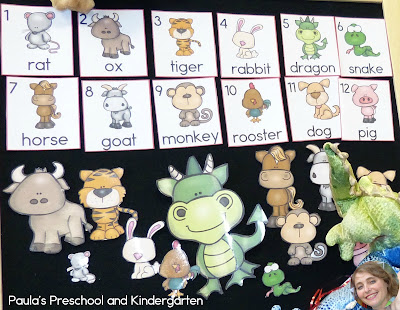Chances are good that if you are reading this, you already know Dr. Seuss' birthday was this week, on March 2nd. What's a library story time to do, but to celebrate?
Choosing which books to read was hard - there are so many great Seuss
books. I'm sure you have your favorites! Ms. Debbie finally settled on Green Eggs and Ham and One Fish Two Fish Red Fish Blue Fish.
Deciding which follow up activities to do was also a challenge.
There's an abundance of ideas on the internet, I've gathered some of
them here on my Seuss Pinterest board.
We
knew we had to have something tactile for our families - our kiddos
seem to crave paint and sensory play, so we try to include something
that will meet that need each week. We also try to include STEAM
(Science, Technology, Engineering, Art and Math), because the library is
about so much more than literacy!
Looking at my stack of Seuss books, I realized a great math concept to tie in was patterning: just think of the Cat's Hat. Out came some blocks and unifix cubes! As usual, some kiddos were inspired by our ideas, and others found their own direction in the materials. Manipulating the blocks, choosing the color combinations they like, and balancing their creations are just as relevant concepts as making a pattern - and obviously, for some children, those were more important concepts to explore right now. This doesn't mean they won't learn patterning - there will be many, many more opportunities to explore these materials and others!
Watching and listening to the children interact with the materials and with their caregivers teaches Ms. Debbie and I just as much as exploring the materials we set out teaches the kiddos! I loved hearing children describe their patterns as zebra pattern (black and white) and bumblebee pattern (black and yellow).
They don't have the mathematical language to describe these as AB or ABB patterns, but found language that clearly expressed what they saw! I also watched a 3 year old take a bumblebee pattern and a rainbow pattern, and start to put them together. He looked at them, and realized that they were very different - and separated them again - and grinned at his mom as he did.
We put out hand painting for the children, with a suggestion of One Fish Two Fish, and an example of red fish and blue fish. Most of the time we don't put out a model or suggestion of what an activity will look like, because that tends to limit the potential children see in the materials. We're not looking to have 40 identical craft projects at the end of the day - we're looking for 40 satisfied children who have explored materials and have taken away their own learning from them! Still, occasionally our grown up friends need help to figure out which direction to go - and I expected that this activity would primarily involve our caregivers painting on the children's hands.
I was wrong! (Not the first time! :-) ) I LOVED seeing children painting their own hands, and even one painting her momma's hand! How cool are our parents, that they can not only encourage this kind of creativity, but even let their children draw them right on in to the fun!
We did have a whole lot of fish looking hand prints - and also pages and pages crowded with little red and blue hand prints. The sensory element of this painting activity was thoroughly explored, and found to be satisfying!
There was another activity, which I think was the most loved: hopping and popping! A little bubble wrap goes a long way with the preschool crowd - think about how satisfying it is to pop each little bubble, the sound it makes... and then add jumping and stomping! Oh yes, our children hopped and popped, and did not stop! (So did a few of the adults, possibly including me.)
Our final activity was our graph: Would you eat green eggs and ham? The results were more than a little inconclusive this week: one of our younger siblings discovered the glue stick and paper circles, and went to town. I watched him at it, and knew he was thoroughly skewing our results - but it just didn't seem important enough to stop him. Each family still stopped at the graph, and children and caregivers talked about what each child thought. Everyone had a chance to express their opinion, and add a circle, learning about the process of choosing, expressing themselves, and participating in a democracy by voting. Sure, one little guy was voting over and again, but at 2 years old, he has time to develop self regulation. For right now, knowing how to use a glue stick will suffice.
I love teaching and learning with young children, this is where I share my ideas.
Welcome to Paula's Primary Classroom! This blog is where I share ideas for teaching and learning with families, friends and other early childhood educators. Please don't use the photos or text of this blog without permission, but please do use any ideas you find useful. Thank you for stopping by!
Showing posts with label blocks. Show all posts
Showing posts with label blocks. Show all posts
Monday, March 7, 2016
Sunday, February 14, 2016
Celebrating Chinese New Year
Kung Hei Fat Choi - Wishing you all a prosperous new year!
We celebrated Chinese New Year at story time this week, and as usual, we had a blast!
I got to lead story time, which is sooooo much fun! I love reading to the little ones, and singing and dancing, and did I mention all the fun things we get to do afterwards? While I'm sure some people think I'm doing this as an act of volunteerism, I have to admit that getting to hang out and play with small people is an absolute treat for me.
I put together some props to use while retelling the story of the Great Race - the story of how the years of the Chinese Zodiac were named for 12 animals.
We started with the animals lined up on one side of the felt board, and as I told the story I moved each animal across. The children helped me figure out which number each animal was, and I put up the numbered cards across the top. (This modeled the left to right progression of our writing, as well as numerical order - but all the children saw was a fun activity.) Can you see the dragon puppets flying by the animals in the lower right hand corner? One of our guests really loved the shiny dragons.
How about these for shiny dragons!? One of our sensory bins had golden dragons, red tinsel, gold coins, red envelopes, and some other shiny shapes hidden in it.
Here's our other sensory bin: pompons with jewels, tongs and clothes pins to work those fine motor skills.
Those little fingers are working hard, developing muscles that will later help these children to hold pencils as they learn to write.
Block play helps build hand muscles too, while also working on spacial skills, balancing, and learning about 3 dimensional shapes (with an occasional lesson in gravity thrown in for good measure!)
Painting our dragon scenes was very popular this week, as friends used sparkly paint to create a background, and added dragons on top. At least, that's what I thought was the plan, but as usual the children took the materials furthar and in different ways than we poor adults can hope to imagine: beautiful silhouettes!
I was surprised to see that the favorite center this week was actually the tangrams! This set of 7 shapes can be formed into a square, or any number of other creations. I read a wonderful book, The Tangram Magician by Lisa Campbell Ernst (no, I'm not affiliated with any book sellers, the link is just for your convenience). In the story a magician transforms himself into different animals and objects, which are all represented with tangrams. The kiddos LOVED it! I put out tangram patterns of all 12 animals of the Zodiac that I made, plus enough paper tangrams for everyone to make their own creation - and they did!
Here's our graph that we made to show which activities each child liked best. We looked at last week's graph, and introduced some great mathematical language: more, less, most, least. Graphing their favorites is an easy way to introduce graphing, and all the math skills it entails - and it gives us great feedback that we can use as we plan future activities.
Each child went home with a red envelope with a nickel in it (red envelopes with money are a traditional New Year gift), and one of our families brought in delicious New Year cakes that she made for everyone.
For more Chinese New Year activities, please see my Chinese New Year Pinterest board, and see this post from a previous celebration.
Friday, August 22, 2014
More mathematical thinking with math games and manipulatives
I like to do math games and manipulatives after lunch each day with the kiddos. It's a great time for it - everyone finishes eating at different times, so after they bus their table and use the bathroom, they get to choose which of the available activities they want to use. I have a variety, so each day is a little different, but there are always open ended materials that lend themselves to sorting, patterning, graphing and measuring. It's interesting to watch how the children use the materials - as you can see, this child is observing another child's play! Children learn from each other, as well as from the materials... oh yes, and the teachers.

Pattern blocks are used in a variety of ways. Sometimes the children will copy and extend patterns that I made...
...other times they sort, stack, or pretend with them.
"This domino has zero spots on it," I was informed. He's correct - and without needing to do any "standardized testing," I know he has that concept firmly in place.
Cuissenaire blocks are another favorite. I remember using these in Mrs. Potts' class in first grade..a long time ago! I remember thinking of them as a "2 block" or a "7 block" - they come in 10 different lengths and colors, so orange blocks are as long as 10 white ones... but none of my preschool children has ever verbalized this without being guided to the concept. Yet most children figure out to use them as stairs, showing an intuitive understanding of the different lengths. When this child ran out of white "ones" blocks, she started using other colors to make her stairs - and later went back and replaced the stacks of white blocks to use all of the colors and lengths. She's showing that she understands longer and shorter - and again, no test is necessary.
Even very simple materials, like these sorting bears, can provide insights into what children are thinking and learning as they play. These girls sorted their bears by size and style, and lined them up (to go where?)
Later one of the girls created a graph with them. I asked what had the most (blue) and the least (brown and black, because there are zero.)
Another child had all his bears lined up ready to go to Walmart. (Back to school shopping? Day after Thanksgiving sales? That's a lot of bears lined up!)
These dinosaurs were gathering in "families".
I thought it was interesting that this kiddo not only sorted the dinosaurs by color - but then made a pattern with the different kinds of pink dinosaurs.
"These two are the same," this child informed me. I asked her how, and she told me they're the same kind of dinosaur.
This child also told me that his dinosaurs were "the same," but his explanation was that they are both orange.
"Play is often talked about as if it were a relief from serious learning. But for children play is serious learning. Play is really the work of childhood."
Subscribe to:
Posts (Atom)









































